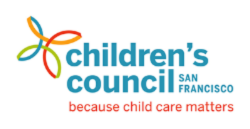Topics
Choosing Child CareFamilies' RightsFamily & Community EngagementFinancial AssistanceLicensing & SafetyParenting & Child DevelopmentProvider ResourcesResource & ReferralSpecial NeedsThis “active learning” approach provides a strong academic foundation. It promotes independence, decision making, cooperation, creativity, and problem-solving. There is a lot of focus on consistency, routine, and adult-interaction. This method encourages parental involvement. Teachers work with parents to continue learning at home. Parents can take part in classroom activities and workshops. HighScope learning is available for infants/toddlers and preschoolers.
Infants/Toddlers
This method upholds that children need to feel safe and supported so they can learn with their whole body. Children learn to trust their teachers. The learning environment is safe, flexible, and focused on the child. It’s comfortable and meets the child’s developmental needs and interests. Children can reach, explore, and play with various materials in their own way and at their own pace. Caregivers are nurturing and engaging. Infants and toddlers move and explore on their own.
A consistent, flexible routine builds trust between the child and teacher. Children feel safe to explore their environment. Ongoing child and program assessment is a big part of the HighScope curriculum. Teachers observe each child and then tailor the curriculum to meet their needs. Adult-child interaction is important in this method, and caregivers/teachers play with infants and toddlers at their level and pace. Emphasis is on verbal and nonverbal communication, respect, encouragement, and conflict resolution.
Preschool
The preschool classroom helps children make decisions and build social and academic skills. The classroom is a community. Teachers act as partners to support learning and use encouragement instead of praise. They focus on problem-solving to help children resolve conflicts. The classroom has interesting materials for learning, and it’s set up to feel predictable and safe for the child. Clear labels help children explore and learn on their own. The daily routine is an important part of this method. The structure is consistent but also has opportunities to explore. Children play alone and with small and large groups.
Daily activities also include cleanup, self-care, exercise, and group play.
Children learn to plan their actions, do their activities, and review what they’ve done. They learn how to reflect on their actions with their class and teacher. The HighScope philosophy believes that these skills help children become successful students and adults.
Sources:
https://highscope.org/
Was this article helpful?
Similar Resources
Families’ Rights in Choosing Child Care
In California, parents have the right to make the best child care choices for their family. Parents have many options:...Child Care Resource and Referral Agencies (CCR&Rs)
What is a CCR&R? Child care resource and referral agencies (CCR&Rs) serve families, child care providers and the...Licensing and Monitoring for Child Care Facilities in California
Community Care Licensing Information The Department of Social Services, Community Care Licensing (CCL) licenses and moni...Log into your account
Don't have an account? Sign up
Sign up to save your own provider lists
Already have an account? Log in
Create an account with Email Address | Phone Number

